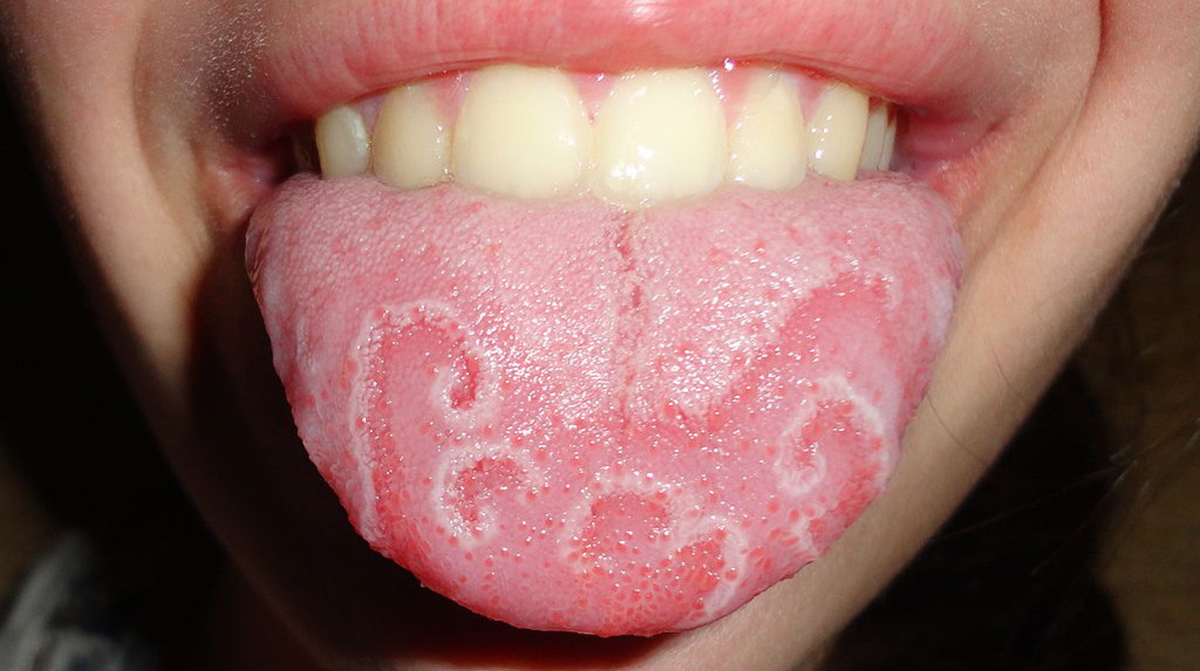Halloween is upon us again! We hope you know all about the health hazards that come with the creepiest holiday of the year, and that you'll avoid drunk driving, lots of candles around your house, and those infamous poison- or razor-filled candies (if they're for real). Of course, you have your healthy pumpkin recipes all picked out, and are looking forward to scaring or entertaining people with your costume.

The best Halloween costumes give people a real fright, but not for too long. The same is true for these rather scary-looking diseases that aren't nearly as bad as they look and sound.
Dermatophytosis
Encounter a bunch of round, raised and sore-looking patches on your body — or someone else's — and you're almost guaranteed to freak out. Dermatophytosis can affect the whole body, from the scalp and face to the torso, groin, legs and feet. The patches start in a particular area and can then spread all over the place, accompanied by itching and later oozing and blistering.
Also commonly known as ringworm, Dermatophytosis has characteristic ring-like edges that can be felt. The name "ringworm" makes dermatophytosis sound even more frightening, but don't worry — this nasty-looking infection is fungal rather than parasitic in nature so no, those rings aren't worms or worm eggs developing under the skin, or anything like that.
A physical examination and some simple tests will confirm the diagnosis of ringworm, which comes from a fungus that's found in soil and is also very common in various mammals, including cats and goats. While it itches and looks nasty, a topical antifungal cream is all it takes to get read of dermatophytosis. Patients are also advised to wash all the clothes and bedding that came into contact with the fungus, to prevent reinfection.
Geographic Tongue
You've probably heard that the physical appearance of your tongue says a lot about the general state of your health. A healthy tongue should typically have a pink tone, smooth edges, move easily through the mouth, and have a light coating, but not a white one. If your doctor ever asked you to stick your tongue out they were probably looking for clues about your overall well-being, but examining tongues was taken seriously a long time before modern medicine came along. In Traditional Asian Medicine, they go so far as to say that your tongue is like a "map" to your health.
See Also: Hidden Halloween Dangers You Should Know About
"Geographic tongue" is a genuine medical condition, and though it is quite pretty it will doubtless scare people who encounter it — in part because the tongue is seen as such an important indication of health. Thankfully, geographic tongue is harmless. In most people, the whole upper surface of the tongue is covered by hair-like structures called papillae, most of which contain taste buds. People who have geographic tongue are simply missing some of these papilae, giving their tongue a map-like appearance.
Strange Disorders You've Probably Not Encountered Before
Hypertrichosis
Hypertrichosis is colloquially knows as werewolf syndrome, a term that's enough to make anyone run for the hills. Medically, one of the forms of this disease is called congenital terminal hypertrichosis, which makes the condition sound like it's fatal.

Individuals affected by generalized hypertrichosis grow hair all over their bodies, except on the palms of the hands, the foot soles, and mucus membranes. The word "terminal" actually refers to the type of hair that covers the body — terminal hair is a thick, dark type of hair. Historically, people affected by the condition were frequently employed by circuses and some still do work in the circus. Perhaps the really scary thing here is how people tend to shun those who look different!
Agyria
Would you be taken aback if you saw someone with emitting a grey-ish blue, almost glowing color from their skin? Most people are — those who have agyria, a condition that appears to be irreversible, report that folks cross the street to avoid them, thinking they are radioactive or contagious. Living with this condition can also have a very serious impact on a person's career and romantic life, something that forces us to conclude that agyria is not harmless.
What causes this strange condition, then? Agyria is the result of "an overdose of silver"; the long-term ingestion of silver. It used to be more prevalent when silver was seen as a legitimate remedy for various medical conditions, but the popularity of colloidal silver in alternative health circles is threatening to make agyria more widespread. The moral of the story? Two, actually. Don't use silver as a remedy and especially not in large doses (no, there's no scientific evidence that works anyway!), and try not to make assumptions based on someone's appearance.
Blaschko's lines
Here's something we all have, though we may not be aware of it — Blaschko's lines. Blaschko's lines are skin lines that form patterns that are though to be the result of the migration of embryonic cells as we form in utero. They are not visible at all under normal conditions, but some diseases can make them apparent. This creates a strange, marble-cake like look to the skin and a "V" shape will become apparent on the back, while the chest shows "S"-like curves and wavy shapes are present on the head.
See Also: Halloween Health And Safety Tips For Adults
Blaschko's lines have been observed in other mammals as well. They can be the result of benign pigmentation and skin disorders, but can also be a side effect of more serious conditions such as Systematic Lupus Erythematosus.
- Photo courtesy of Gaudencio Garcinuño by Flickr : www.flickr.com/photos/31112252@N00/4095232523
- Photo courtesy of Martanopue by Wikimedia Commons : commons.wikimedia.org/wiki/File:Geographic_tongue_(cropped).jpg

